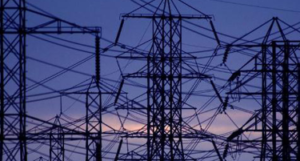The Nigerian government is making a significant stride in transforming the energy landscape by allocating a whopping $800 million for the development of vital substations and distribution networks under the Presidential Power Initiative.
Minister of Power, Adebayo Adelabu, made this announcement in a statement released by the ministry on Sunday while attending the China-Africa Cooperation Summit in China alongside President Bola Tinubu.
During a visit to the TBEA Southern Power Transmission and Distribution Industry in Beijing, Adelabu outlined the financial plan, which designates $400 million for each of two critical projects. Lot 2 will focus on constructing substations for the Benin, Port Harcourt, and Enugu Distribution Companies (DISCOs), while Lot 3 will target Abuja, Kaduna, Jos, and Kano DISCOs.
In terms of power generation, the minister reported a peak output of 5,170 megawatts on August 30, albeit with a regrettable reduction of 1,400 megawatts due to the DISCOs’ inability to manage the supply effectively. “This situation is unfortunate, especially as we aim to elevate generation to 6,000 megawatts by year-end,” he stated.
In discussions with TBEA executives, Adelabu reiterated the federal government’s commitment to collaborating with reputable firms like TBEA to fulfill President Tinubu’s vision of revitalizing Nigeria’s power sector. This includes crucial enhancements in transmission and distribution systems while promoting renewable energy initiatives.
The minister highlighted the pressing issues plaguing the power sector, attributing them to outdated and fragile infrastructure that has historically resulted in inconsistent electricity supply to households and businesses. He noted that over 59% of Nigerian industries have opted out of the national grid, relying instead on self-generated power due to the grid’s unreliability.

Adelabu emphasized the current administration’s determination to overhaul the power sector, noting that various initiatives are underway to restore consumer confidence, particularly among industrial users.
Reflecting on Nigeria’s historical power generation, he pointed out that it took the country 35 years to double its output from 2,000 megawatts to 4,000 megawatts. However, since assuming office, the administration has successfully increased capacity to 5,170 megawatts within a year.
The goal is to achieve 6,000 megawatts by year-end, leveraging a mix of hydroelectric and gas-fired power sources. By 2030, the administration aims for a target of 30 gigawatts, with 30% derived from renewable energy sources, including small hydroelectric plants, solar power, and offshore wind farms.
Meanwhile, the Transmission Company of Nigeria (TCN) has announced its capability to transmit 6,000 megawatts of electricity to distribution centers nationwide. Managing Director Sule Abdulaziz confirmed that significant upgrades to the infrastructure have been made over the past three years, including the construction of new substations funded by internal revenue and donor contributions.
Abdulaziz shared that recent grid simulations have revealed a capacity of 8,100 megawatts, with TCN successfully transmitting 5,801 megawatts from generating stations to distribution centers in March 2021. He assured that continued enhancements to the grid infrastructure would enable TCN to comfortably transmit 6,000 megawatts and potentially more by year-end.
The TCN remains a pivotal player in the Presidential Power Initiative, which aims to tackle the prevalent challenges in Nigeria’s power sector and expand the capacity of transmission and distribution networks to achieve an operational capacity of 25,000 megawatts.



